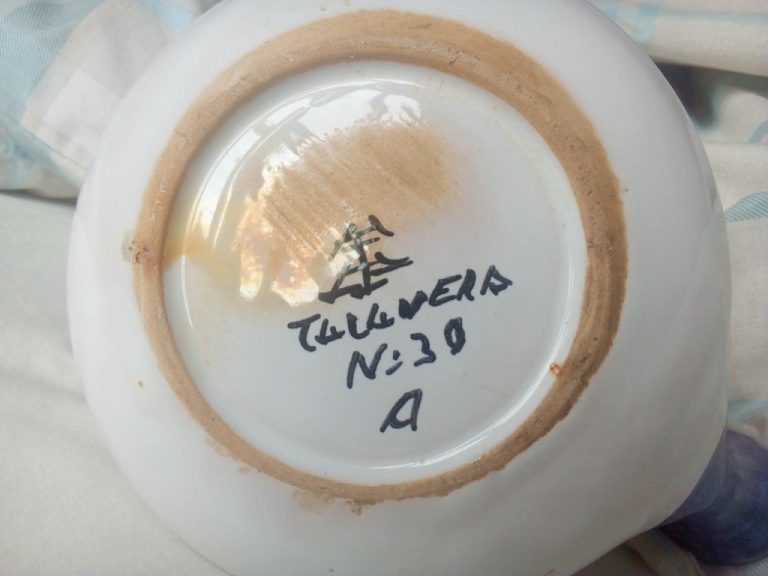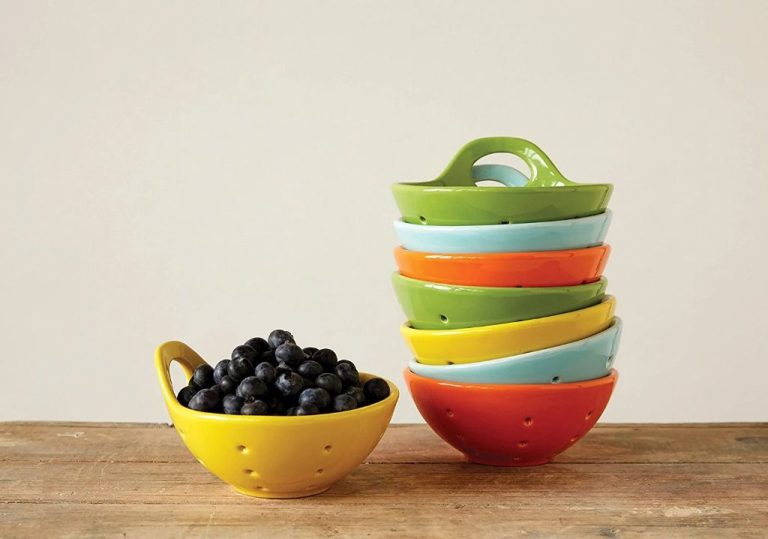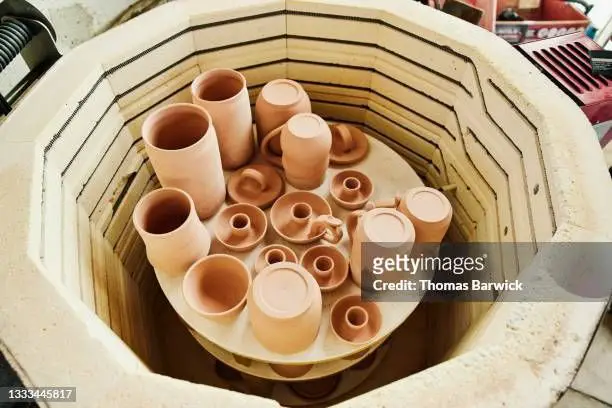What Is A Clay Extruder Used For?
What is a Clay Extruder?
A clay extruder is a tool used in pottery and ceramics to create consistent coils or strips of clay. It consists of a hollow metal or plastic barrel that has an opening at one end where clay is loaded. At the other end is a shaped die that determines the cross-section of the extruded clay. A plunger or auger applies pressure to push the clay through the die.
Clay extruders allow potters and ceramic artists to quickly and uniformly produce coils of clay with a consistent size and shape. This saves time compared to hand-rolling coils individually. The continuous clay extrusion can be cut to any length desired. Common die shapes include round coils, square rods, and flat slabs. Clay extrusion enables both repetition for production work as well as uniqueness when extruded clay is combined into sculptural forms.
Overall, a clay extruder machine is a studio tool that allows efficient and controlled production of standardized clay components for handbuilding and wheelthrowing projects. It provides consistency and saves labor in coil and slab construction methods.
History of Clay Extruders
Clay extruders have been used for centuries to create long pieces of clay for pottery and other ceramic work. The earliest known use of a clay extruder was in the 1800s. According to the Virginia Institute of Natural Science, the extruder technique was first patented in 1797 by Joseph Bramah, who developed a process for extruding lead pipes.
In the early 19th century, clay extruders were manually operated and used to make architectural terra cotta and sewer pipes. A key innovation came in 1885 when Alexander Bain patented the de-airing clay extruder. As explained in A Short History of the Extruder in Ceramics, Bain’s extruder used a vacuum to remove air bubbles from the clay before extrusion, allowing for smoother and more consistent results.
Modern electrically-powered clay extruders emerged in the early 20th century and allowed for more precise speed and pressure control. Today’s clay extruders utilize digital controls and can produce highly intricate forms with excellent repeatability and efficiency compared to earlier hand-operated models.
How Clay Extruders Work
Clay extruders work by using a hydraulic press to push clay through a die at the end of a barrel. The hydraulic press applies pressure which forces the clay to flow through the barrel and out of the die to form the desired shape.
Inside the barrel is an auger or piston that helps push the clay along as pressure is applied. The auger rotates to move the clay forward, while a piston moves back and forth to push the clay through the die.
The die at the end determines the shape that the extruded clay will take. Dies come in many shapes like circles, squares, stars, and more. The die also smooths the surface of the clay and compresses it into a uniform density.
As the clay is extruded, it can be cut to the desired length using a wire cutter. The continuous pressure from the hydraulic press behind allows multiple pieces to be produced quickly and efficiently.
Clay extruders allow potters and clay artists to produce uniform pieces of clay in the desired shape. The automated pressure produces a consistent product much faster than shaping by hand.[1]
[1] https://theartofeducation.edu/2021/01/6-ways-to-use-a-clay-extruder/
Types of Clay Extruders
There are several main types of clay extruders used in pottery and ceramics:
Manual Extruders
Manual extruders rely on the force applied by the potter’s hands to push the clay through the die. These are simple, inexpensive extruders that are good for small projects and limited production (Sheffield-Pottery).
Hydraulic Extruders
Hydraulic extruders use fluid pressure to generate force and extrude the clay. The pressure can be finely adjusted to control the flow rate. Hydraulic extruders allow high volume production and large forms (Bailey Pottery).
Screw Extruders
Screw extruders use an Archimedes screw to push the clay through the die. The screw provides high pressure and a constant rate of extrusion. These are ideal for industrial production of pipes, tiles, and more.
Ram Extruders
Ram extruders use a pneumatic ram to force clay through the die. The ram provides impact and shear force for dense, high quality extrusions. Ram extruders are common in industry.
Uses of Clay Extruders
Clay extruders have several key uses, with the most common being in pottery-making, brickmaking, and tile manufacturing. Their ability to push clay through a shaped die allows for efficient, consistent, and repetitive forming of clay into various cross sections.
In pottery, extruders enable potters to quickly produce symmetrical handles, feet, spouts, and other appendages for wheel-thrown or handbuilt vessels. Common extruded forms include coils, hollow tubes, and solid rods which can be cut to size and attached. Using an extruder to shape elements leads to uniformity and saves time compared to hand-rolling each individual piece.

Extruders are heavily utilized in industrial brick and tile fabrication. Pugmills mix and compress clay which is fed into an automated extruder that continuously pushes out fired clay at a fixed width and height. The extruded columns are then sliced into individual bricks or tiles with wire cutters. This allows efficient, mass production of clay products with consistency in sizing.
In addition to speed, extrusions maintain an even distribution of clay particles without air pockets. The resulting fired clay is denser and less prone to cracking or breaking. Overall, extruders lend efficiency, consistency and quality to working with clay across pottery, brickmaking, and tile manufacturing.
Clay Extruder Parts
Clay extruders have several key components that work together to push clay out through a die to create the desired shapes.[1]
The main parts of a clay extruder include:
- Barrel – This is the main cylindrical body that houses the auger or screw. It is usually made of cast iron or steel.
- Auger/Screw – This is the corkscrew-shaped part inside the barrel that rotates to push the clay forward when turned by a motor or hand crank. The auger is often made of steel or plastic.
- Hopper – The hopper sits on top of the barrel and is where the clay is loaded into the extruder.
- Die – The die is the small opening at the end of the barrel that shapes the clay as it is extruded. Dies come in many shapes like circles, squares, stars, etc.
- Gearbox – The gearbox connects the motor to the auger and controls the speed and torque.
- Stand/Frame – This provides a stable base for mounting the extruder.
Other common parts include a control panel, speed controller, cutting wire, and collection tray. The quality and durability of the parts, especially the barrel, auger, and dies, determine how well the extruder will perform.
Clay Extruder Maintenance
Proper maintenance is crucial for keeping a clay extruder in good working condition. The main maintenance tasks involve cleaning, lubricating, and periodically replacing certain parts.
Regular cleaning helps prevent buildup of dried clay or debris that could clog the extruder. It’s recommended to wipe down the external parts after each use. For the barrel and internal areas, push a piece of soft clay through to pick up any stuck bits [1]. Follow up by swabbing with a cotton swab and rubbing alcohol. Fully disassemble and deep clean all parts every few months.
Lubricating the moving components helps the extruder function smoothly. Apply a thin layer of vegetable oil, mineral oil, or commercial lubricant to the screw shaft every couple of uses. Over-oiling can leave residue in the clay so use sparingly.
With heavy use, parts like the barrel, dies, and screw may eventually wear out. Check for damage or warping. Replace immediately if the screw shaft is bent. Having backup parts on hand allows quickly resuming work after replacements.
Clay Extruder Safety
When using a clay extruder, it’s important to follow proper safety procedures to avoid injury. Some key safety tips include:
Wear safety goggles or glasses when operating the extruder to protect your eyes from clay debris [1]. Clay can fragment into sharp pieces when forced through the extruder die.
Keep your hands away from the auger and die during operation. Long hair should be tied back. Loose clothing should be avoided [2]. Anything that could get caught in the moving parts can cause injury.
Unplug the extruder when not in use and before changing dies or cleaning. This prevents accidental engagement of the auger.
Allow extruded clay to fall freely from the die. Do not manually pull or guide it. This can put stress on the auger.
Do not force clay through the extruder or overload it. Only apply gradual, even pressure on the plunger.
Keep the extruder properly maintained per the manufacturer’s instructions. A damaged or worn auger can break apart during use.
Work on a stable, level surface so the extruder doesn’t tip over in operation.
Follow all safety guidance provided with your specific make and model of clay extruder.
Advantages of Clay Extruders
Clay extruders offer several key advantages for potters and ceramic artists. One of the main benefits is consistency. Extruders allow the clay to be pushed out in a steady, uniform flow at a controlled speed. This results in consistent sizes and shapes for the extruded clay pieces (Pottery Crafters). Manual hand extrusion can often be uneven and irregular in shape.
Another advantage is efficiency. With a mechanical extruder, clay products can be produced much faster compared to manual extrusion or throwing on the wheel. The speed and volume allows artists to create large quantities of extruded forms in a short amount of time (Soul Ceramics). This higher efficiency is ideal for commercial production or when making multiple pieces.
The consistency and efficiency of extruders also leads to higher quality results. Pieces are uniform and sturdy, with clean lines and precise forms. The process minimizes flaws and imperfections. Less rework is required, so finished products have a more polished appearance. Overall, clay extruders enable potters to quickly produce high volumes of consistent, quality pieces.
Disadvantages of Clay Extruders
While clay extruders provide many benefits, they also have some drawbacks to consider. One of the main disadvantages is their high cost. Quality extruders with advanced features can be quite expensive, especially for hobbyists or small studios on a budget.
In addition to cost, clay extruders can have a complex design. They may require careful assembly, maintenance, and some technical knowledge to operate properly. Changing out disks and dies takes effort, and improperly inserting these can lead to jams or other issues.
Extruders are also limited in what shapes and sizes they can produce. The variety of available disks and dies restricts the possibilities. For more organic, free-form shapes, hand sculpting may work better. Extruders excel at repetition but fall short on flexibility.
According to one source, swapping clay cartridges can also be a hassle when extruding frequently or making large objects. Overall, clay extruders have some clear disadvantages to weigh against their many benefits when considering a purchase.



